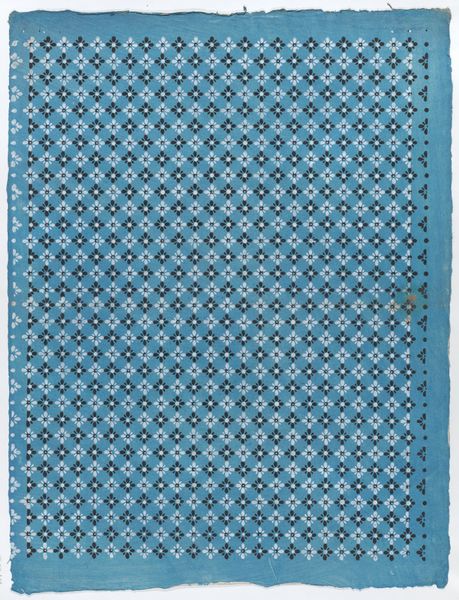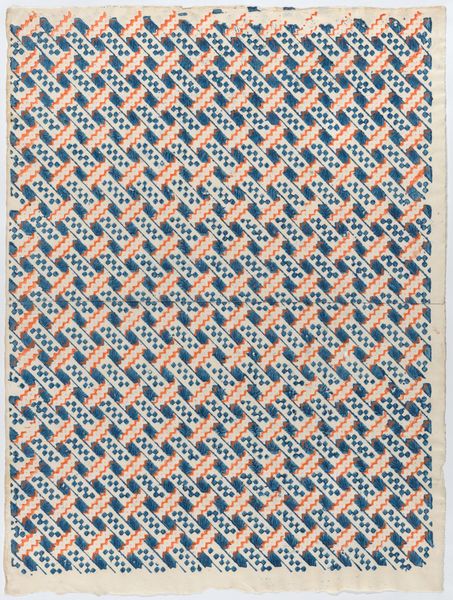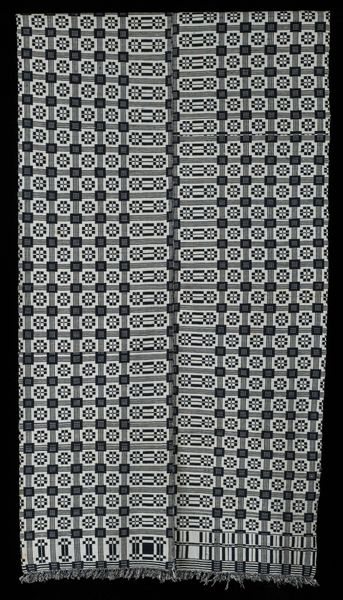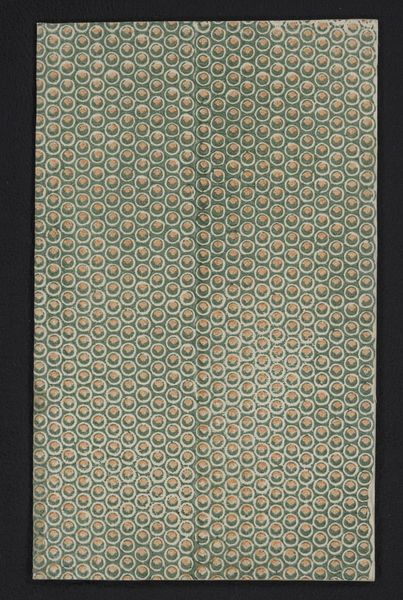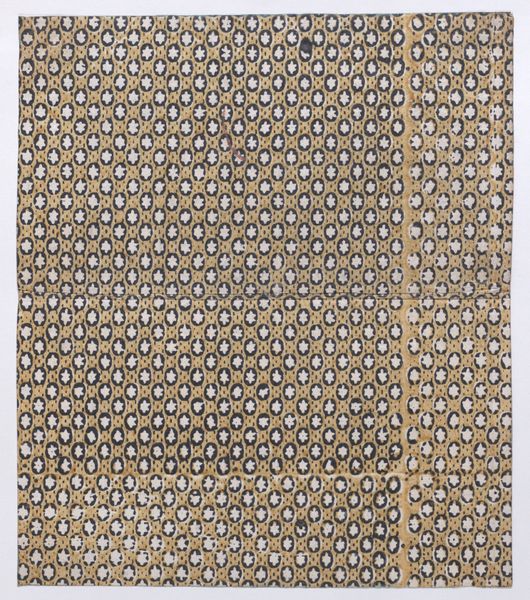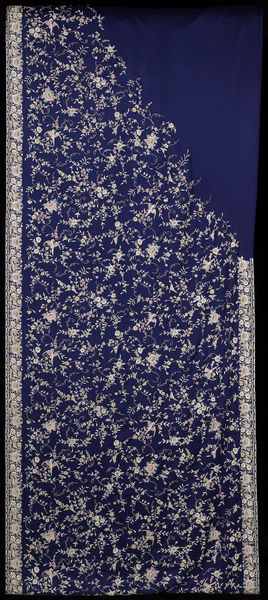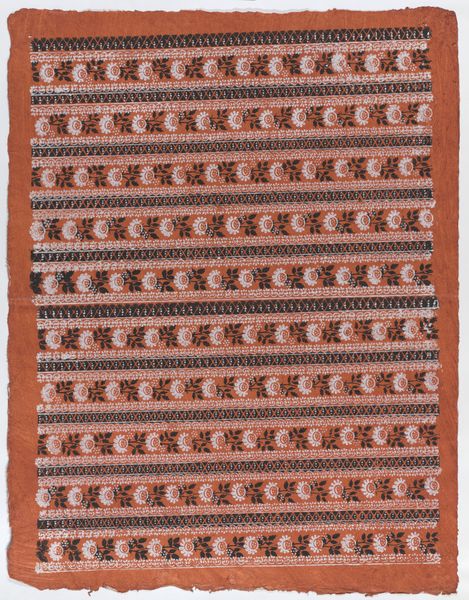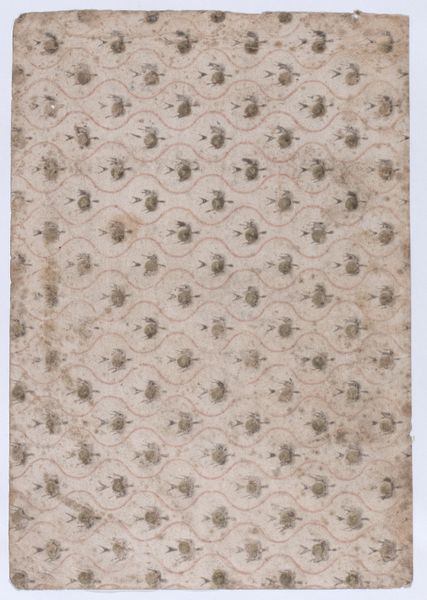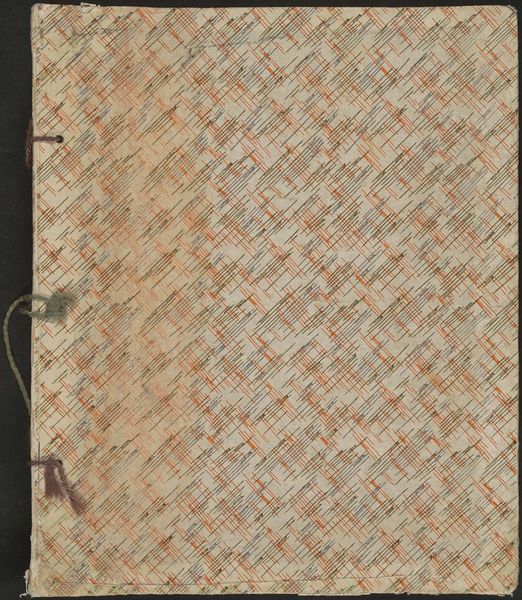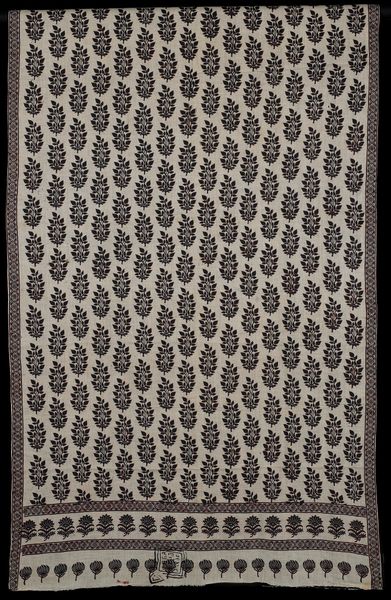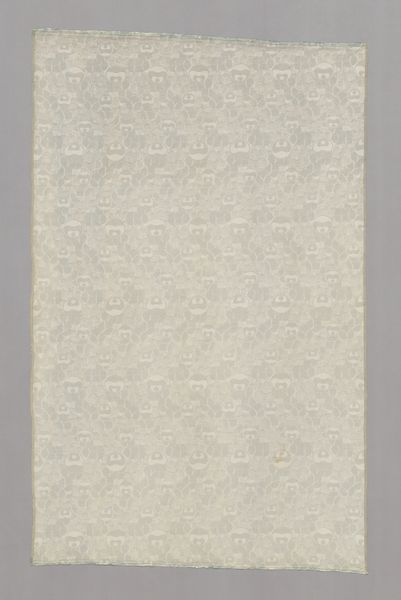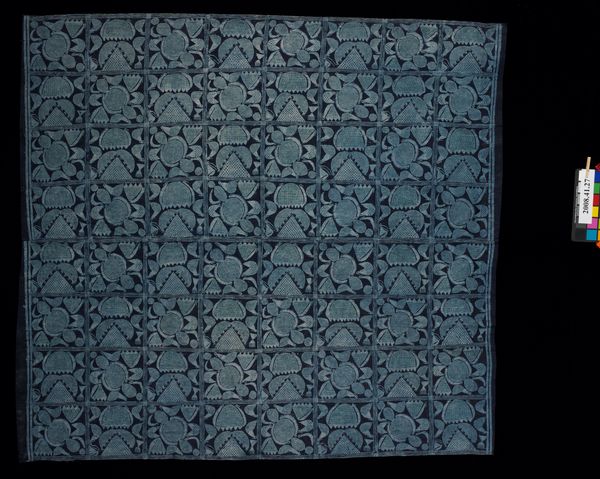
fibre-art, textile, cotton
#
fibre-art
#
textile
#
cotton
#
decorative-art
Dimensions: 40 5/16 x 87 11/16 in. (102.39 x 222.73 cm)
Copyright: Public Domain
Editor: Here we have a Batik Panel, dating to around the 20th century. The material is cotton textile, showcasing intricate weaving. It's predominantly blue and white, and there’s something almost hypnotic about the repetitive geometric and floral patterns. What story do you think this piece is telling, Curator? Curator: It’s crucial to remember that textiles often occupy a complex position in art history. For a long time, pieces like this were viewed as ‘craft’ rather than ‘art,’ often devalued because of their association with domestic labor and women’s work. Examining it through this lens, we might ask: how does the display of this Batik Panel in a museum setting change its perceived value and meaning? Editor: That’s a really interesting point. It’s almost like elevating everyday life into the realm of art, or acknowledging the skill involved in it. Curator: Precisely! Think about the Pattern and Decoration movement in the late 20th century – artists consciously challenged the art world's hierarchies by embracing decorative elements and patterns, reclaiming techniques like batik, weaving, and quilting. The intense labor, skill and the cultural heritage embedded in this Batik Panel challenges the traditional art historical narratives. Does that shift your perspective on the piece? Editor: It certainly does! I now view it as making a deliberate statement. It feels like this panel could be asserting its cultural significance, demanding recognition within a larger art historical context. Curator: Exactly. It invites us to question what we consider ‘art’ and who gets to decide. Museums are social spaces that can reshape the role and display of these beautiful works. Editor: Thank you, seeing it as part of this broader power dynamic is fascinating! Curator: Indeed. Artworks aren’t made in vacuums, but respond to and reshape the cultural environment. It’s vital that we keep thinking critically about this dynamic.
Comments
No comments
Be the first to comment and join the conversation on the ultimate creative platform.
